Timeless Rotterdam: the Classics
Rotterdam is known as Manhattan on the Maas, full of modern architecture. All true. But it has a lot of classics to offer.
Manhattan on the Maas was a village once. Named after the river Rotte. The city got its rights in 1340 and grew to be the sole Dutch city with a decent skyline. There are some ingredients which made Rotterdam the metropolis which it is today.
The Maas
The Maas river is even more important to Rotterdam because of the harbour1 – also known as the Port of Rotterdam.
With the opening of the Nieuwe Waterweg in 1872, Rotterdam transformed into Europe’s gateway to the world. Between 1962 and 2004, the Port of Rotterdam was the busiest in the world. Nowadays, it ranks around 13th, overtaken mainly by Asian ports. It remains Europe’s number one, handling around 436 million tonnes of freight annually, supporting over 193,000 jobs in the Rotterdam–Rijnmond area, and contributing €30–34 billion to the Dutch economy each year.
City without a heart
14 May 1940 will forever mark the day Rotterdam changed. The Germans aimed to force the Dutch to surrender, and bombing2 the entire city centre3 was part of their aggressive war campaign. On 15 May, the Netherlands capitulated, beginning five years of occupation under the Nazi regime.
The first reconstruction plan, Plan Witteveen, was initiated just four days after the bombing, maintaining a traditional urban layout. During the war, the city managed to clear the rubble (a process that took about seven months) and complete a few projects, such as the Maastunnel.
After World War II, large-scale rebuilding4 could finally begin. In 1946, the Basisplan (Basic Plan) by Cornelis van Traa was introduced. It aimed for a modernist reconstruction rather than restoring the old city like they did in Warsaw.
The architectural legacy of the 1950s and 1960s still shapes the city today - and we should cherish it. Take the Lijnbaan, the first car-free shopping street in Europe. Other notable post-war landmarks include the Groothandelsgebouw (next to Central Station), De Bijenkorf, the bank buildings along the Coolsingel, De Doelen concert hall, the arrival hall of the Holland-America Line, and the Euromast (the symbol of the city’s post-war rebirth).
A video from 1970, source: Gemeente Rotterdam (Stadsarchief).
Not everything was demolished in the war. There are some beautiful original parts in Rotterdam, like Delfshaven or Veerhaven. Or streets in Rotterdam-West like the Heemraadssingel or Mathenesserlaan.
The skyline of Rotterdam is constantly evolving, but always dominated by lifting cranes.
Roll up your sleeves
Rotterdam has a character and mentality all of its own; formed by its status as world harbour, the war & the rebuilding after, the multicultural population and the international trade spirit. It's one of not talking too much, but getting on with things (niet lullen, maar poetsen). A mindset marked by down-to-earthness, hard work, and gritty humour. And all of it delivered in that delightful accent – the one of “oh ja joh” and with a typical wet T.
My Rotterdam
I came in as an almost 19-year-old student and left Rotterdam 13 years later (as a traitor; I moved to rival Amsterdam5). A whole life is in between. Amazing friends, love, a student life to the max, stories I'm only sharing amongst those who were involved, great fun, some disappointments, a few scars (some literally!), the not-millennium bug, failure here and there, seeing the sun rise after long nights, the introduction of the Euro, finishing my studies at last, the city mourning and celebrating at the same time6, marriages of friends, work, and in the meantime, Rotterdam kept on building.
The friendships are everlasting souvenirs.
It all started in 1996 when I moved from Almelo to Rotterdam. It was also the year the Erasmus Bridge opened and the Beurstraverse was added to the city centre. Both have nicknames like a good Rotterdam habit prescribes - the bridge is mostly known as the Swan, and the shopping street is called the Koopgoot (which could be translated as shopping gutter).
The first reaction to my move was always: "Why Rotterdam? It's such an ugly city, with all those new buildings." I have to say it is not an obvious choice for a student coming from the east of the Netherlands (for me that was a trigger to go). After a few months, I could give those critics a reply. It isn't a city suitable for love at first sight; it is not cute, romantic or picturesque. It's raw, dynamic, it has humour, it's in your face and has so much to offer. You just have to make some effort to explore it.
For your Classic Rotterdam itinerary
During my years in Rotterdam, I loved to wander around. With friends or alone. As I mentioned, it's a city you need to discover; it doesn't reveal all of its good parts at once.
Here is a list of very normal places to experience Rotterdam at its best. Just to prove that not all things you visit in a city should be new, hip7 or whatever. Embrace the classics!

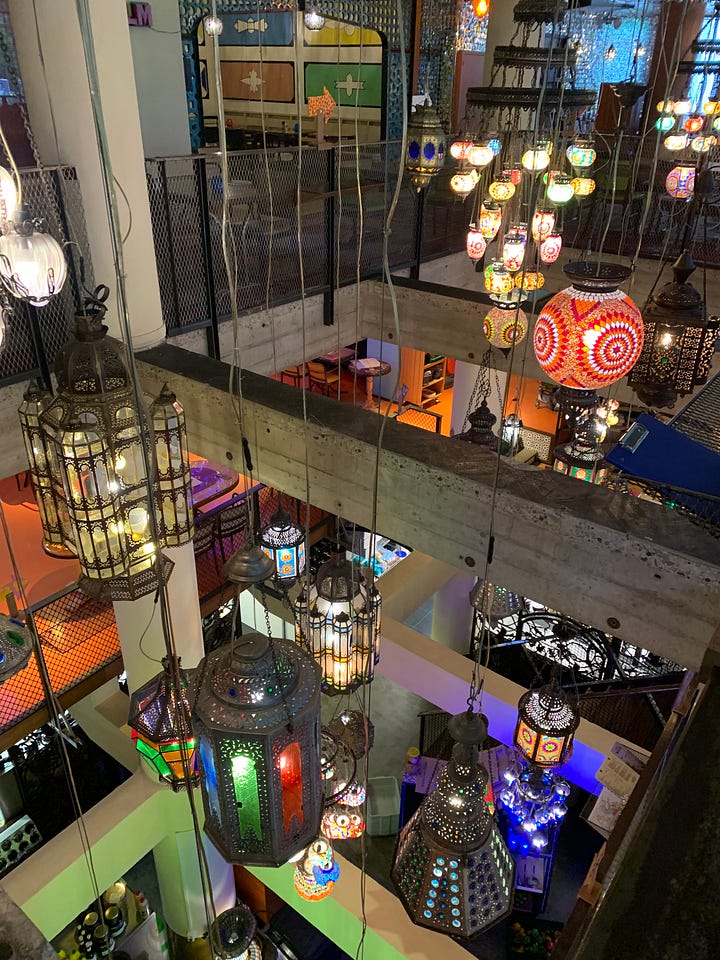
Areas
The Centrum Market: Every Tuesday and Saturday there is a big outdoor market on the Binnenrotte. It's that square where you can find the new Market Hall, the Cube houses8 and the library which is in the shape of a pencil. After my move to Amsterdam, I had to adjust to the street markets instead of the square I was used to in Rotterdam. Besides fresh products (Bananas! 🍌 There was always a lady yelling about them), you can also find vendors selling second-hand items, electric products and flowers.
Witte de Withstraat: Café De Witte Aap on the Witte de Withstraat was the best bar in the world according to Lonely Planet readers. Yes, it's a fun bar (and crowded), but this street has more to offer. Like art institute Melly, Hung Kee (a Chinese restaurant open until midnight), Warung Mini, and good-old Bazar (Middle Eastern/Mediterranean food and a great breakfast offer).
Nieuwe Binnenweg: When I lived in Rotterdam-West I cycled through this street many times. And I still do on my visits, because it's such an entertaining one. It's a street full of classics, such as Westerpaviljoen (great terrace), Plaatboef, Knetter, Metz, Rotown (for concerts!) and fashion brands like Susan Bijl and Joline Jolink.
Food & Drinks
Bram Ladage: Forget about fringy boutique fries and over-the-top chips. Bram Ladage is the only snack bar you should queue for in Rotterdam.
Dudok: All the hours I spent here! Drinking coffee, reading newspaper, eating cake or having lunch. The bar-brasserie is a constant value in Rotterdam since 1991. Their cakes are famous, especially the apple pie, but also the other ones they create in their pastry shop (one of my friends served Dudok cake on her wedding).
West-Kruiskade: The Chinatown of Rotterdam! It offers Asian supermarkets and a lot of restaurants and eateries (mostly Chinese and Surinam). Around the corner on the Westersingel or Mauritsweg you can also find some decent Asian restaurants, like classic Tai Wu.
Hotel New York: Speaking of classics. For food (fruits de mer!), drinks and a hotel (popular for wedding nights). To make it extra classic you can take the watertaxi to it. And when you are there, just walk the bridge to Katendrecht. This former seamen's quarter (and as a student for me known as the location of Tattoo Bob) is now one of the cool neighbourhoods in Rotterdam.
Art, Design & Literature
Kunsthal: My favourite museum in Rotterdam. It opened in 1992 and is designed by architect Rem Koolhaas9. It doesn't have a permanent collection, but it hosts modern art exhibitions.
Huis Sonneveld: One of the best-preserved houses in the Nieuwe Bouwen style (designed in the early 1930s by the same architects as the Van Nelle factory and the Feyenoord stadium).
The Boijmans is closed until 2029 for renovation (the building is of 1935), but since 2021 you can visit the Depot next door. The National Museum of Photography, which is based in Rotterdam, is also temporarily shut - it will move to Pakhuis Santos on Katendrecht and re-open later this year.
Shopping
Donner: this bookstore exists since 1912. It's located in a former bank building at the Coolsingel. Thanks to investors and crowdfunding Donner is an independent bookstore and a highly recommended one. It has such a huge assortment of books (and gifts) that you easily can spend a few hours there. It has also a café.
Looking for some luxury? Go to the Van Oldenbarneveltstraat for shops like Wendela van Dijk or Mostert & van Leeuwen (fashion), Retreat (beauty) and Mangiare (food).
Festivals & events in Rotterdam
2025
The agenda for the coming months: theatre festival De Parade (20 - 29 June), North Sea Jazz (11 - 13 July), the Caribbean Summer Carnaval (25 - 26 July), the World Port Days (5 - 7 September) and A Day At The Park dance festival (13 September).
Or attend open-air film festivals this summer like Pleinbioscoop (14 - 30 August) on the Wilhelminapier next to Hotel New York, and Roffa Mon Amour (13 - 24 August).
2026
The new year starts with the 55th edition of the International Film Festival (29 January – 8 February 2026)
Experience Rotterdam at its very best, be one of the many spectators during the 45th marathon on 12 April 2026!
Read, Watch & Listen
Holland Pop was the first popfestival in the Netherlands. The ‘Woodstock of Rotterdam’ was held in the Kralingse Bos and took place in 1970. You can watch Stamping Ground (the registration of the festival) and/or the Holland Pop 1970 documentary (in Dutch).
Substacker
made some great photos in Rotterdam recently. Check all the posts here.I also can recommend the movie De Marathon about companionship, persistence and the Rotterdam marathon (available on Netflix).
Poet Jules Deelder wrote a famous poem about Rotterdam called 'Rotown Magic'. It ends with (translated into English): "Rotterdam can't be filmed, Rotterdam is far too real."
Another classic: Lee Towers is one of Rotterdam's best-known singers. Notable fact: he is a former crane operator.
Uitsmijter
'Ketelbinkie' is a classic sailor's song, about a boy aboard a ship with a dramatic ending. Here is a translation of the song.
You can do a Rotterdam Harbour Tour on a boat with Spido, or during a cycling event in September (I did that once; the wind!)
‘The city without a heart’ is well defined in Zadkine's statue ‘The Destroyed City’, which was unveiled in 1953.
More on the 010 vs. 020 rivalry in my post 'Why Everybody hates Amsterdam’.
On 6 May 2002, Pim Fortuyn (a popular politician from Rotterdam) was murdered, and on 8 May Feyenoord won the UEFA Cup. On that very evening, there was a fence between the town hall where people were grieving for Fortuyn; while on the other side on Stadhuisplein people were celebrating the victory of their club.
In 2015, The New York Times and in 2016 Lonely Planet featured Rotterdam on their top destination lists, triggering a rise in tourism. In 2025, the city returned to the spotlight, largely due to the opening of the FENIX Museum of Migration.
Rem Koolhaas also designed the De Rotterdam, which was finalised in 2013.

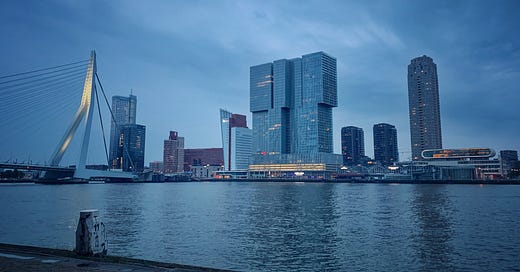


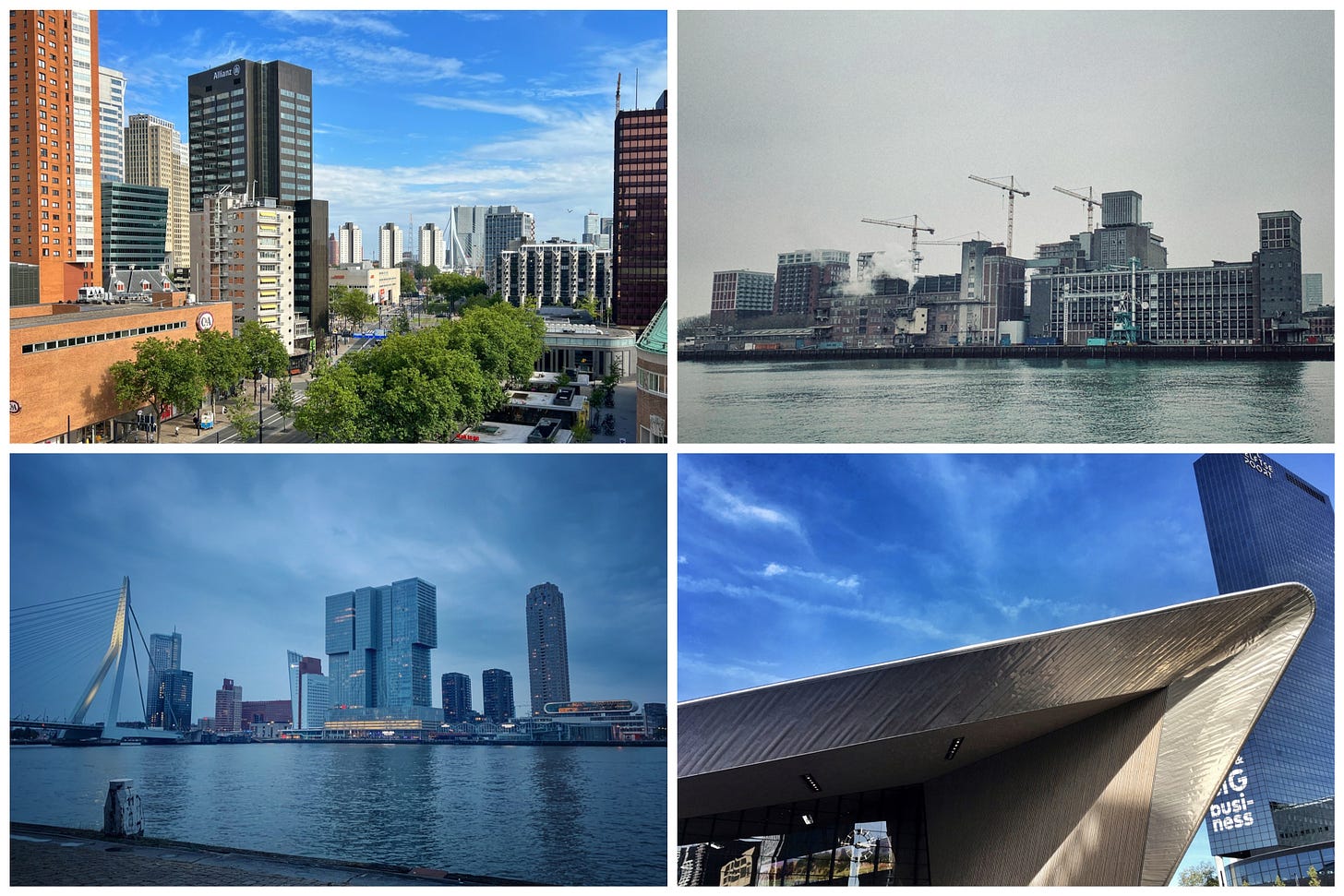
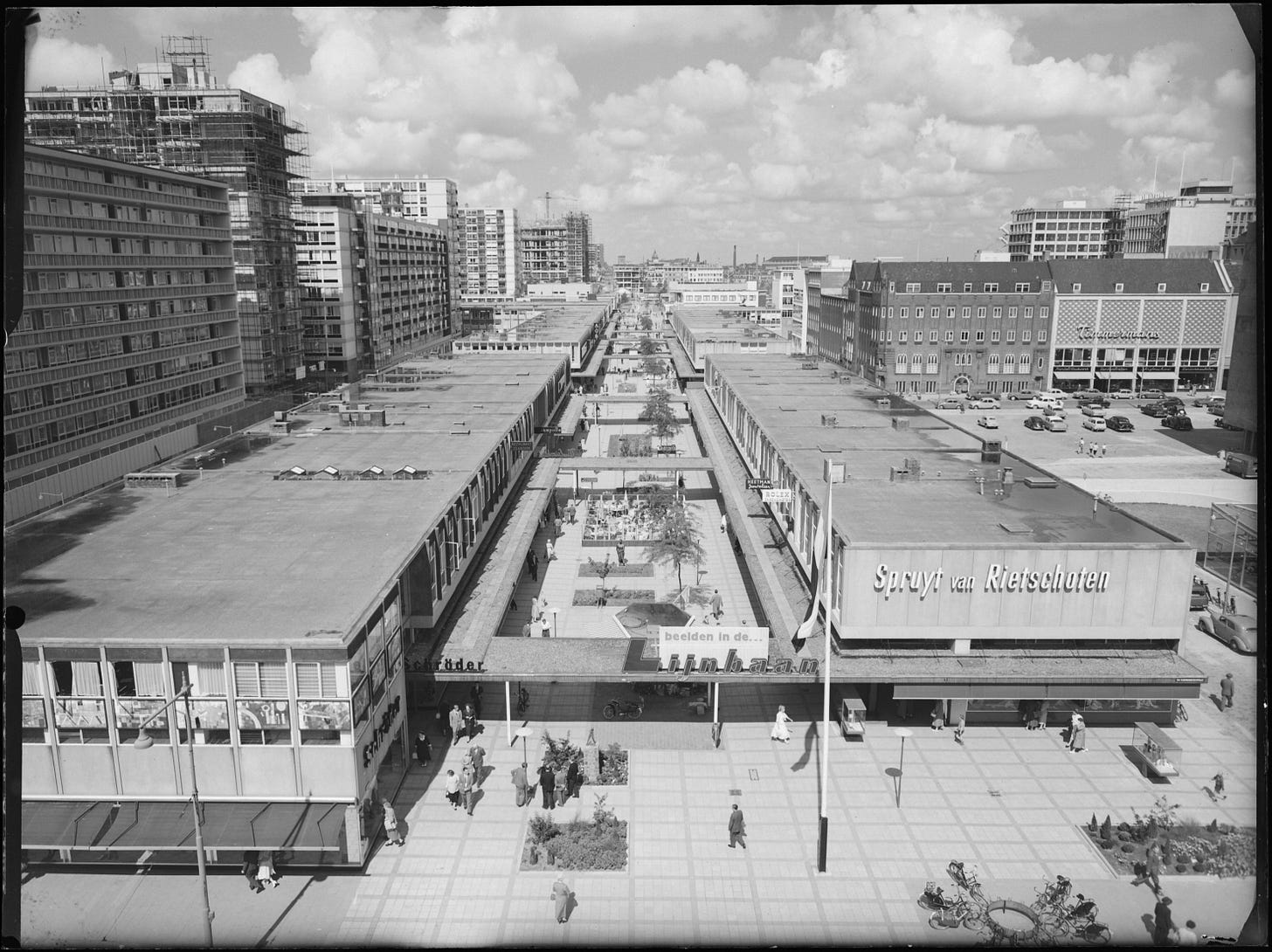


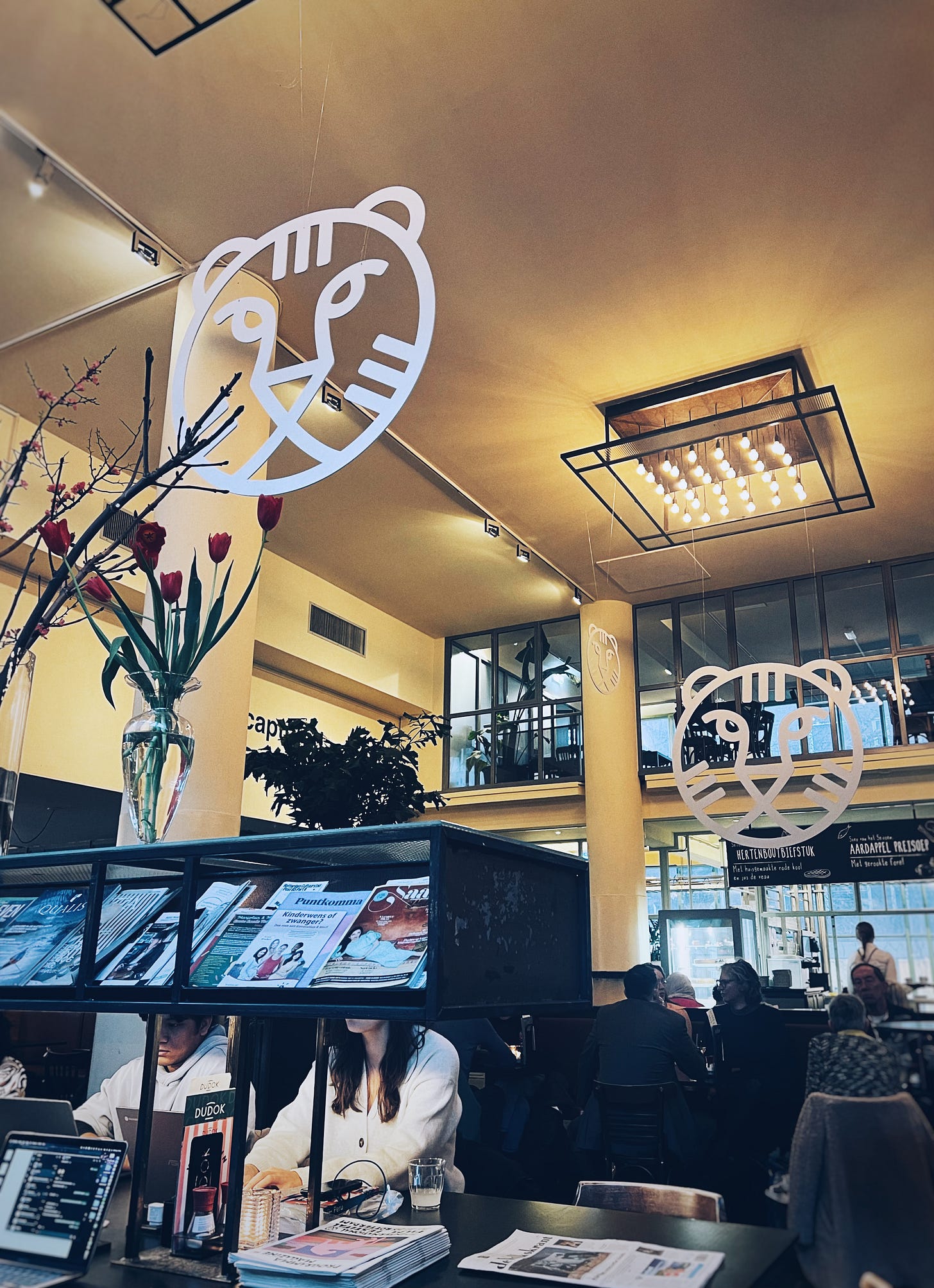
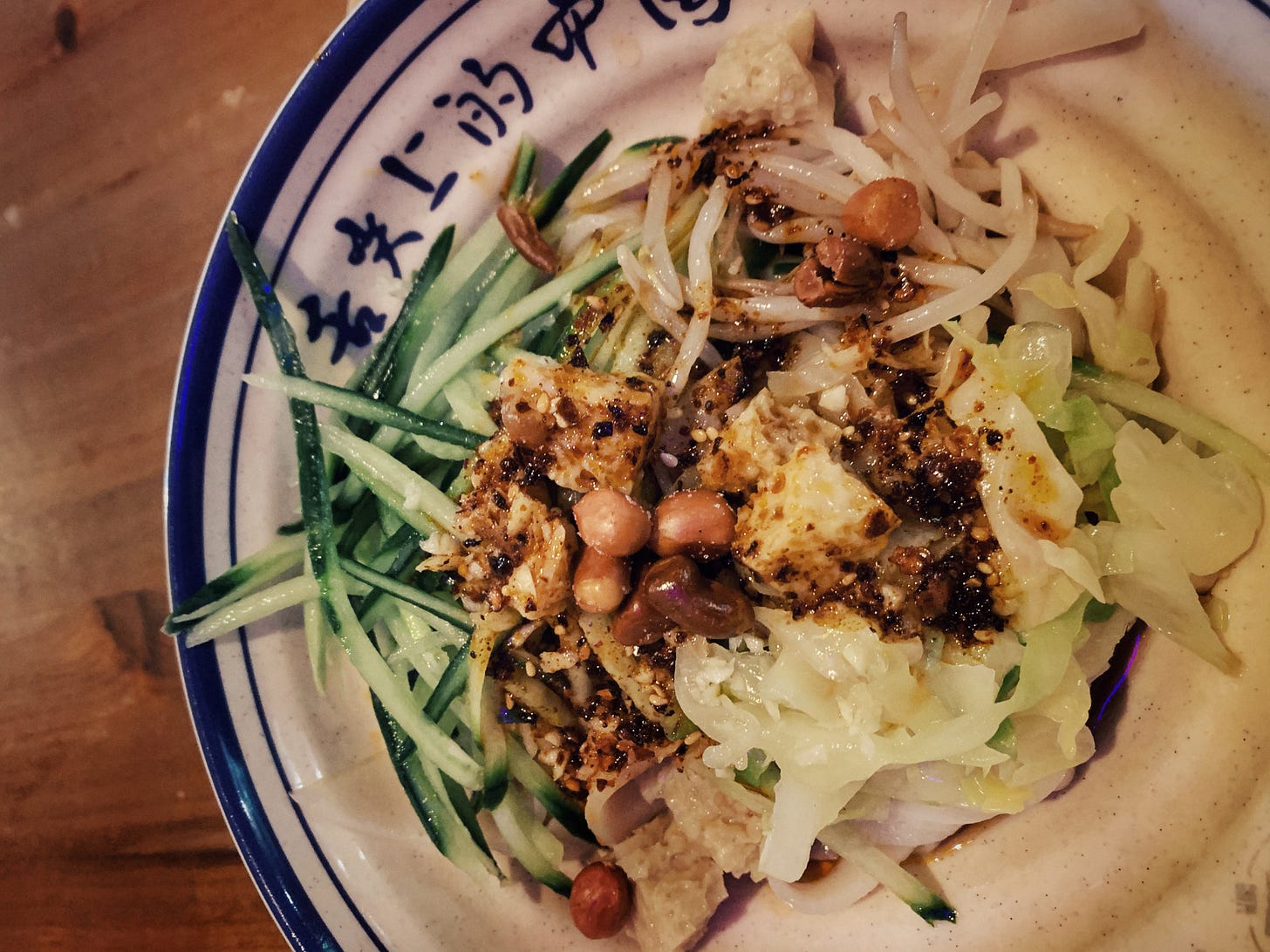
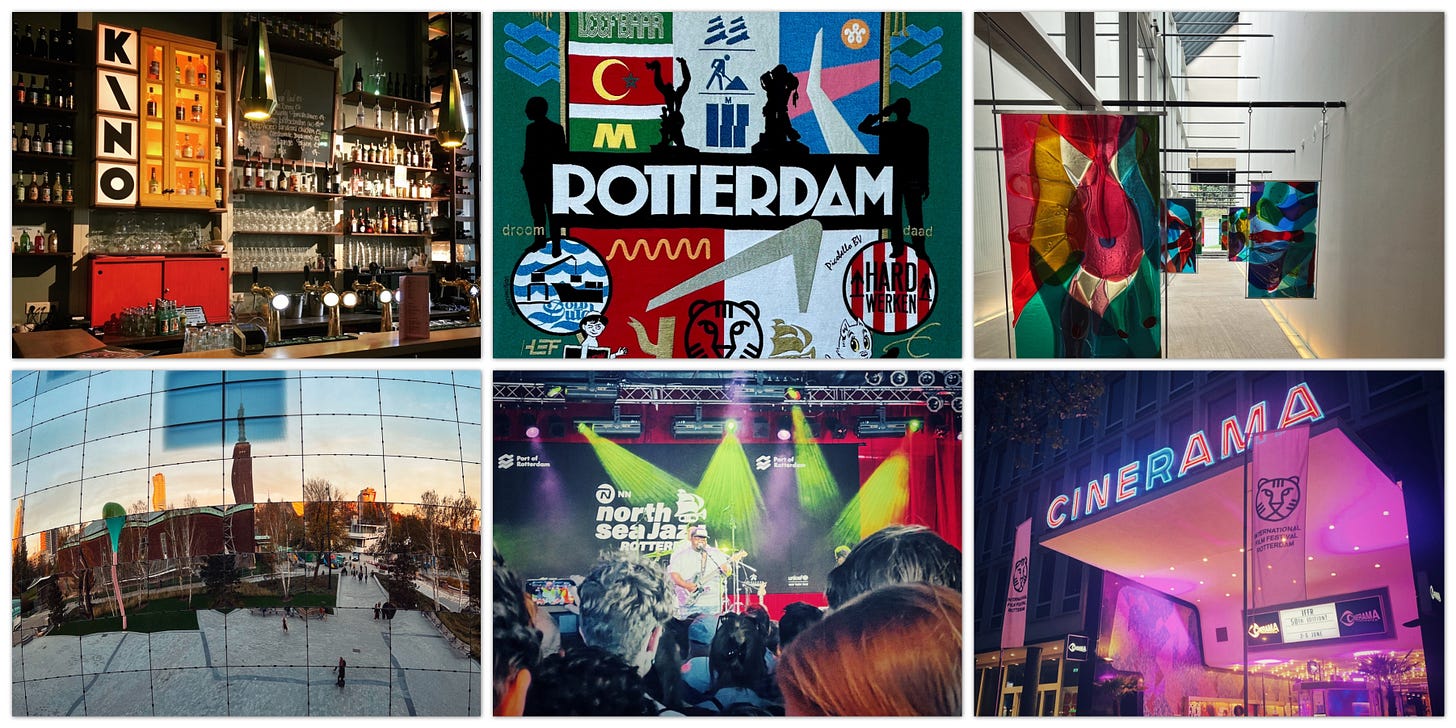
‘s Zomers Flowers moved from the Van Oldenbarneveltstraat to the Boekhorststraat (underneath the former Hofplein trainline, soon to be a park) a long time ago!
Many thanks for the mention! (Rotterdam was a really fun visit!) Cool history here in your post. 😃